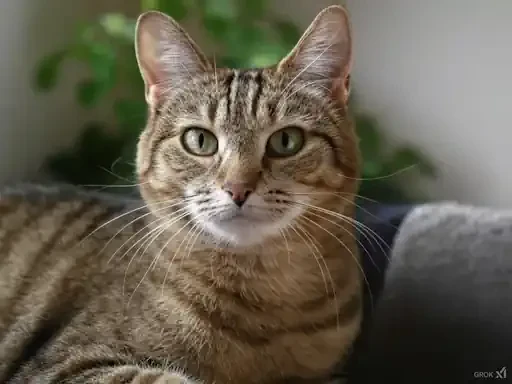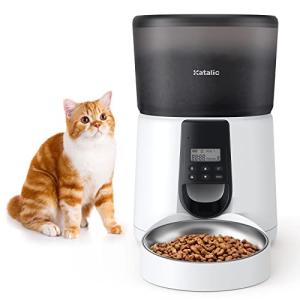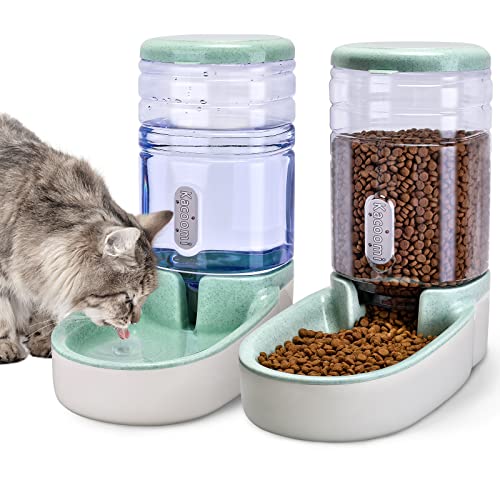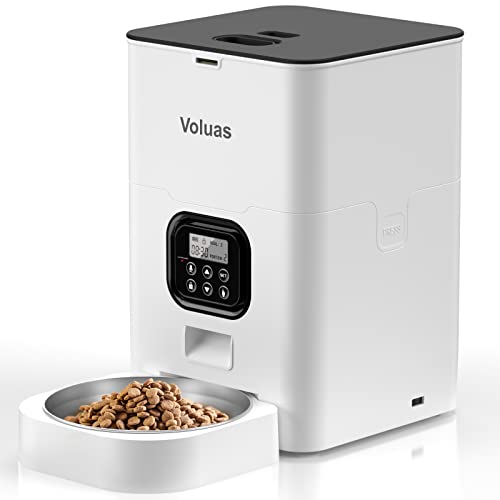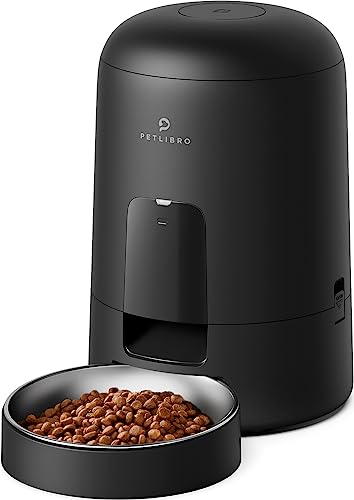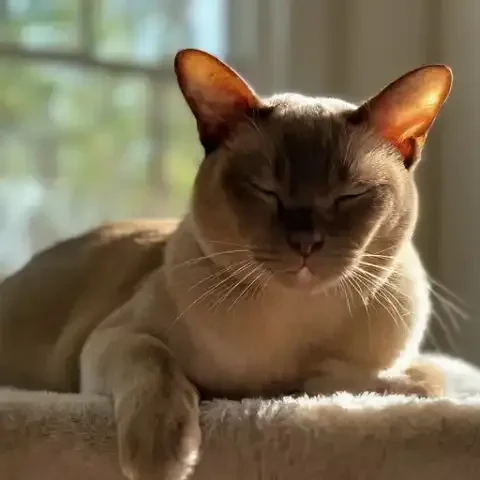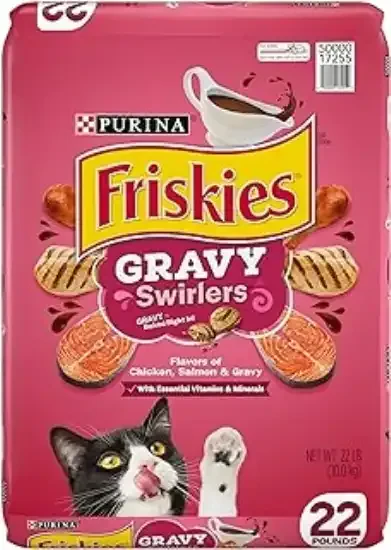Imagine a creature that evokes the mystique of the jungle, a feline with the striking spots of a leopard or ocelot, yet purrs contentedly on your lap and greets you at the door with wagging tail enthusiasm. This captivating paradox is the Ocicat, a breed that shatters expectations and redefines the very concept of a "wild" domestic cat. Instantly recognizable by their breathtaking spotted coats, Ocicats possess an undeniable exotic allure, hinting at a wild ancestry that captures the imagination. But here's the enchanting secret: beneath that captivating "wild child" exterior lies a heart of pure domestic devotion. Ocicats are entirely domestic cats, bred through careful selection to mimic the appearance of their jungle cousins without a single drop of wild blood. This breed is a testament to the art of feline artistry, a living masterpiece crafted from domestic stock to embody the beauty and grace of the wild, tempered with the loving and trainable nature of our cherished house cats. Prepare to be captivated by the Ocicat, a feline enigma that seamlessly blends striking visual appeal with an equally compelling "dog-like" personality, offering a truly unique and rewarding companionship experience. This article serves as your comprehensive guide, peeling back the layers of misconception and revealing everything you need to know about these extraordinary spotted wonders. Whether you're a seasoned cat aficionado, captivated by spotted breeds, or simply seeking a feline companion who is as intelligent and engaging as they are beautiful, understanding the Ocicat is a journey in itself, promising to deepen your appreciation for the boundless creativity and wonder within the feline kingdom. Join us as we delve into the fascinating origins, striking physical traits, delightful personality, essential care requirements, and robust health of the Ocicat, equipping you with all the knowledge to truly appreciate and potentially welcome one of these spotted marvels into your life.
To truly understand the Ocicat, it's vital to firmly establish one fundamental fact: they are entirely domestic cats. Despite their name and their undeniably wild appearance, Ocicats possess absolutely no wild cat ancestry in their lineage. This breed is a pure creation of selective domestic cat breeding, a testament to human ingenuity in shaping feline characteristics. The "wild look" of the Ocicat is, therefore, an exquisite illusion, a carefully crafted visual masterpiece achieved entirely through the strategic pairing of domestic breeds. Their breathtaking spotted coat, the very feature that often leads to the misconception of wild ancestry, is the result of deliberate breeding efforts, aimed at replicating the captivating spotted patterns seen in wild cats like ocelots, but within a completely domestic feline framework. Hence, the clever breed name "Ocicat," a playful portmanteau combining "Ocelot" and "Cat," perfectly capturing their visual resemblance to the wild ocelot while unequivocally declaring their domestic nature. Ocicats are not merely a visually striking novelty; they are a recognized and established breed within the cat fancy, enjoying recognition from major cat registries across the globe, including The Cat Fanciers' Association (CFA) and The International Cat Association (TICA). These registries have meticulously defined breed standards for the Ocicat, outlining the desired physical characteristics, coat patterns, temperament, and overall conformation that define the ideal Ocicat specimen. These standards serve as a blueprint for breeders, guiding their efforts to preserve and enhance the breed's unique traits, ensuring the Ocicat remains a distinct and recognizable breed for generations to come. Distinguishing features of the Ocicat are immediately apparent. Their most prominent characteristic is, without a doubt, their stunning spotted coat, a visual magnet that draws the eye and sparks curiosity. Beyond their spots, Ocicats possess an athletic and muscular build, reflecting their inherent agility and grace. Their large, expressive ears contribute to their alert and keenly intelligent appearance, while their almond-shaped eyes, set wide apart, convey their open and engaging nature. These combined features, orchestrated by careful breeding, create the captivating and undeniably unique Ocicat, a domestic cat that embodies the wild beauty of the jungle without sacrificing the loving and trainable heart of a cherished house pet.
The story of the Ocicat is a captivating tale of American ingenuity and a touch of serendipity, an origin story rooted firmly in the domestic cat breeding scene of the 1960s. This unique breed, while evoking the wild, is entirely an "American Original," conceived and developed within the borders of the United States. The Ocicat's journey began in 1964 in Michigan, the brainchild of breeder Virginia Daly. Daly, a passionate feline enthusiast, embarked on a breeding program with a specific, albeit slightly different, goal in mind. Her initial intention was not to create a spotted cat at all, but rather to produce Abyssinian pointed Siamese cats. To achieve this, she carefully bred Siamese and Abyssinian cats, hoping to combine the pointed coat pattern of the Siamese with the rich, ticked coat of the Abyssinian. However, nature, as it often does, had a delightful surprise in store. In a litter resulting from a Siamese-Abyssinian cross, a truly unexpected kitten emerged. This kitten, named Tonga, was not the pointed Siamese Daly had anticipated. Instead, Tonga possessed a breathtakingly unique coat – a creamy ivory canvas adorned with striking golden spots, a pattern unlike anything Daly had seen in her breeding program before. Initially, Tonga was intended to be sold as a pet. He was, after all, not the planned outcome of the breeding program. However, as Daly observed Tonga's unique beauty and captivating spotted pattern, she began to recognize the potential for something truly extraordinary. It was Daly's daughter who, upon seeing the spotted kitten, exclaimed that he looked like an ocelot, the small, spotted wild cat native to the Americas. This observation sparked an idea, and the name "Ocicat" was born, perfectly encapsulating the visual resemblance to the ocelot while acknowledging its entirely domestic origins. Inspired by Tonga's unexpected beauty, Daly embarked on a deliberate breeding program to solidify the spotted pattern and establish the Ocicat as a distinct and recognizable breed. She continued to breed Abyssinian-Siamese mixes, selecting for spotted kittens, and strategically incorporated American Shorthairs into the gene pool. The introduction of American Shorthairs served a dual purpose. Firstly, it helped to introduce silver color variations into the Ocicat coat palette, expanding the breed's visual spectrum. Secondly, it contributed to a more robust bone structure and overall physical substance, enhancing the Ocicat's athletic build. Word of this new, strikingly spotted domestic cat breed began to spread within the cat fancy. Other breeders became intrigued by the Ocicat's unique appearance and engaging personality, joining Daly in her efforts to further develop and refine the breed. Recognition from major cat registries followed, validating the Ocicat's status as a distinct and desirable breed. The Cat Fanciers' Association (CFA) granted the Ocicat registration status in 1966, a remarkably swift recognition for such a newly developed breed. Championship status from both CFA and TICA followed in subsequent years, further cementing the Ocicat's place among established and beloved cat breeds. From its humble beginnings in Michigan, the Ocicat's popularity rapidly grew, captivating cat enthusiasts not only in the United States but also across the globe. Their unique combination of exotic looks, playful personality, and robust health made them highly sought-after companions, establishing the Ocicat as a cherished and admired breed worldwide, a true American original that continues to enchant cat lovers to this day.
The Ocicat is not only defined by its striking coat pattern but also by its well-proportioned, athletic physique. They are cats built for movement, displaying an agility and grace that reflects their active and playful nature. Ocicats possess an athletic and muscular build, conveying a sense of strength and agility without appearing bulky or heavy. Their bodies are lithe and well-muscled, perfectly suited for running, jumping, and exploring their environment with effortless grace. They are considered medium to large-sized cats, striking a balanced proportion that is neither too small nor too imposing. While not as massive as some of the largest domestic breeds, Ocicats have a substantial presence, conveying a sense of robust health and vitality. Their overall physique is one of balance and harmony, with all body parts in pleasing proportion to one another, creating a visually appealing and structurally sound feline. The Ocicat's signature feature, of course, is their breathtaking spotted coat. This short, satiny coat serves as the perfect canvas for showcasing their distinctive markings, enhancing the clarity and definition of each spot. The coat texture is short, smooth to the touch, and possesses a satiny sheen that adds to their overall polished appearance. It lies close to the body, further accentuating their muscular physique and allowing the spotted pattern to take center stage. The spotted pattern itself is the defining hallmark of the breed, the visual characteristic that immediately identifies an Ocicat. The ideal spots are described as thumbprint-shaped, relatively round and well-defined, and evenly distributed across the body, creating a visually balanced and appealing pattern. The spots should be clearly distinct from the base coat color, enhancing their visual impact and creating a striking contrast. Breed standards emphasize the importance of well-distributed spots, ideally appearing on the sides of the body, shoulders, and flanks, creating a visually seamless and flowing spotted pattern. While the pattern remains consistent, Ocicats display a captivating variety of coat colors, further enriching their visual tapestry. Officially recognized Ocicat colors include Tawny (the original and most classic color, a golden-brown base with dark brown to black spots), Chocolate (a warm chocolate base with dark chocolate spots), Cinnamon (a lighter, reddish-brown base with cinnamon-colored spots), Blue (a soft, bluish-gray base with darker blue-gray spots), Lavender (a pale, lilac-gray base with lavender-toned spots), and Fawn (a delicate, creamy beige base with fawn-colored spots). Adding to this color palette are the silver variations of each color, creating Silver Tawny, Silver Chocolate, Silver Cinnamon, Silver Blue, Silver Lavender, and Silver Fawn Ocicats, each presenting a cooler, more luminous take on the classic spotted pattern. Across all these color variations, the spotted pattern remains the defining characteristic, ensuring that regardless of coat color, the Ocicat's signature spots are always the focal point. The Ocicat head is moderately wedge-shaped, presenting a balanced and harmonious form that complements their overall physique. The wedge is gently contoured, lacking harsh angles, creating a pleasingly rounded facial shape. Their muzzle is slightly rounded, softening the wedge shape and contributing to a gentle and approachable expression. A well-defined chin adds balance to the lower portion of the face. Their ears are medium to large in size, pointed at the tips, and set at a distinctive 45-degree angle on the head, contributing to their alert and attentive appearance. Their eyes are almond-shaped, set wide apart, and angled slightly upwards towards the ears, mirroring the upward slant of their ears and creating a harmonious and alert expression. Eye color is directly linked to coat color in Ocicats. Gold to copper eyes are preferred for most color variations, complementing the warm tones of their tawny, chocolate, and cinnamon coats. However, silver Ocicats may possess green or gold eyes, offering a striking contrast to their cooler silver coats. Blue eyes are considered a disqualification in breed standards, emphasizing the importance of warm, rich eye colors in most Ocicat varieties. The Ocicat tail is medium in length, in proportion to their body, and tapers gradually to a point, completing their balanced and athletic silhouette. Desirably, the tail displays dark banding, echoing the spotted pattern on their body and further enhancing their overall visual harmony. Their legs are strong and proportionate to their body, supporting their athletic build and enabling their agile movements. Their paws are oval-shaped and neat, perfectly complementing their overall refined and athletic physique. These carefully orchestrated physical attributes – the athletic build, the striking spotted coat in its myriad colors, the expressive facial features, and balanced proportions – all contribute to the Ocicat's undeniable beauty and unique visual appeal, making them truly stand out in the feline world.
Living with an Ocicat is an exercise in joyful companionship, a dynamic and engaging experience filled with affection, intelligence, and playful antics. Their temperament is as captivating and distinctive as their appearance, earning them the well-deserved reputation of being the "dog-like" feline. Ocicats are often described as "dog-like" cats, not in the literal sense, but in terms of certain personality traits and behaviors that they share with canines. This "dog-like" descriptor accurately captures their unwavering loyalty to their families, their exceptional trainability, their eagerness to please their humans, and their enjoyment of activities often associated with dogs, such as fetching toys, walking on a leash, and participating in social interactions. They form incredibly strong bonds with their families, thriving on human companionship and demonstrating an unwavering devotion to their chosen people. They are intensely affectionate cats, eager to shower their loved ones with purrs, head bumps, and cuddles. Ocicats are people-oriented and genuinely enjoy being involved in household activities, often following their owners around the house, eager to participate in whatever task is at hand. Their intelligence is another hallmark of the Ocicat personality. They are quick learners, capable of grasping complex concepts and readily mastering training cues. This intelligence makes them exceptionally trainable, excelling in various forms of training, from basic obedience commands to impressive tricks. They are highly receptive to positive reinforcement training methods, responding enthusiastically to treats, praise, and clicker training. Ocicats are not just intelligent; they are also inherently playful and active cats. They possess moderate to high energy levels and require daily playtime and mental stimulation to thrive. They are not content to simply lounge passively; they crave action, interaction, and opportunities to expend their energy and engage their minds. Interactive play sessions are essential, providing outlets for their hunting instincts and channeling their energy constructively. They relish chasing toys, batting at dangling objects, exploring puzzle feeders, and engaging in games that challenge their intelligence and agility. Ocicats are known for their confident and outgoing personalities, approaching the world with a sense of curiosity and self-assuredness. They are often remarkably friendly, even towards strangers, readily accepting attention from new people and adapting well to unfamiliar environments. This confidence and adaptability make them excellent travel companions and well-suited to homes with visitors. Their social nature extends to their interactions with other pets as well. Ocicats generally get along well with children, displaying patience and tolerance, making them wonderful family pets. They also tend to coexist peacefully with other cats and even cat-friendly dogs, particularly when properly socialized from a young age. Their adaptable and amicable nature contributes to harmonious multi-pet households, adding to the overall joy and camaraderie of the animal family. Vocalization in Ocicats is typically described as being moderate and pleasant. They are not known for being overly vocal, but they are communicative and will use their voices to express their needs, desires, and affection. Their vocalizations are often described as soft, melodic meows and chirps, rarely being demanding or disruptive, contributing to their overall harmonious presence within the home. In essence, the Ocicat temperament is a captivating tapestry woven from threads of loyalty, intelligence, playfulness, and confidence. They are deeply devoted, highly engaging, and remarkably trainable companions, offering a truly unique and rewarding feline partnership for those who appreciate their "dog-like" spirit and are prepared to provide the interaction and enrichment they thrive upon.
Caring for an Ocicat is a relatively straightforward endeavor, particularly when it comes to grooming. Their short, satiny coats require minimal maintenance, making them a delight for those seeking a beautiful cat without demanding grooming routines. Grooming needs for Ocicats are minimal, a true blessing for busy owners. Their short, smooth, and satiny coat requires only weekly brushing to remove loose hair and maintain its healthy sheen. A soft-bristled brush or grooming mitt is typically sufficient to keep their coat looking its best. Bathing is rarely necessary unless they become particularly dirty or require it for specific reasons, making them a truly low-maintenance breed in terms of coat care. Routine nail trimming, every few weeks, and regular ear cleaning, as needed, are standard hygiene practices for all cats and apply equally to Ocicats, contributing to their overall well-being and comfort. Dental care should also be a consistent part of their routine. Regular tooth brushing, ideally daily or at least a few times a week, using cat-specific toothpaste, along with dental treats and regular veterinary dental checkups, will contribute significantly to their long-term health and prevent dental disease. Nutrition plays a vital role in maintaining their health and energy levels. Feeding a high-quality cat food, appropriate for their age, activity level, and any specific dietary needs, is paramount. Look for cat food that lists real meat as a primary ingredient and is rich in essential nutrients. Portion control is important to prevent overfeeding and obesity, as Ocicats, like many cats, can be prone to weight gain if they are overfed and under-exercised. Following feeding guidelines on the food packaging and consulting with your veterinarian to determine appropriate portion sizes is advisable. Always ensure they have access to fresh, clean water at all times, promoting hydration and overall health. Exercise and enrichment are crucial components of Ocicat care, vital for both their physical and mental well-being. Daily playtime is not just recommended; it's essential for Ocicats to expend their energy, prevent boredom, and maintain their physical fitness. Interactive play sessions, using wand toys, laser pointers, and toys that mimic hunting behaviors, are highly effective in engaging their playful instincts and providing needed exercise. Providing a variety of toys, including puzzle toys, fetch toys, and toys that challenge their intelligence, will keep them mentally stimulated and prevent boredom-related behavioral issues. Scratching posts and cat trees are essential additions to their environment, providing appropriate outlets for their natural scratching instincts and offering vertical climbing opportunities, satisfying their innate feline desire to climb and survey their surroundings. If desired and with proper training, Ocicats often enjoy leash walking and safe, supervised outdoor exploration in a secure environment such as a fenced yard or catio. Leash training should be introduced gradually and positively, and outdoor excursions should always be carefully supervised to ensure their safety and prevent escapes. Beyond physical exercise, social interaction is a vital enrichment need for Ocicats. They thrive on companionship and require regular interaction with their human families. Spending quality time playing, cuddling, and simply interacting with your Ocicat will strengthen your bond and contribute significantly to their happiness and emotional well-being. Litter box habits in Ocicats are generally excellent, mirroring those of typical domestic cats. Providing a clean, easily accessible litter box, filled with a high-quality clumping litter, is usually sufficient to meet their needs. Overall, caring for an Ocicat is a joy, particularly due to their low-maintenance grooming and their enthusiastic participation in playtime and interaction. Providing a high-quality diet, regular exercise, ample enrichment, and consistent affection will ensure a long, healthy, and happy life for your spotted companion.
One of the most reassuring aspects of Ocicat ownership is their generally robust health. They are considered a naturally healthy breed, with relatively few breed-specific health problems, contributing to their appeal as long-lived and resilient companions. Ocicats are often praised for their good genetic health, benefiting perhaps from their relatively diverse gene pool, resulting from their deliberate outcrossing during breed development. This genetic diversity may contribute to a lower incidence of inherited diseases compared to some more closely bred purebred cats. Hereditary issues specifically prevalent in Ocicats are relatively few, a testament to responsible breeding practices and the breed's inherent genetic robustness. However, like all cats, Ocicats can be susceptible to general feline health issues that are common across many breeds. Hypertrophic Cardiomyopathy (HCM), a heart condition affecting many cat breeds, is mentioned as a potential concern in Ocicats as well. HCM involves the thickening of the heart muscle, potentially impairing heart function. While not necessarily more prevalent in Ocicats, it's a condition to be aware of, and responsible breeders may screen their breeding cats for HCM. Progressive Retinal Atrophy (PRA), a degenerative eye condition that can lead to blindness, has also been identified as a potential, though less common, concern in Ocicats. Genetic testing is available for PRA, allowing breeders to screen their cats and minimize the risk of passing this condition to their offspring. Pyruvate Kinase Deficiency (PKDef), a genetic condition affecting red blood cells, is another condition that has been identified in the Ocicat breed, although again, less prevalent than in some breeds. Genetic testing is also available for PKDef, allowing breeders to make informed breeding decisions and reduce its incidence. Hip dysplasia, a condition affecting the hip joint, is mentioned as a possibility in cats generally, and could potentially occur in Ocicats, although it is less common in cats than in dogs and not considered a major breed-specific concern. Despite these potential health concerns, it is crucial to reiterate that Ocicats are generally considered a very healthy and robust breed. These mentioned conditions are not necessarily widespread or overly prevalent within the breed, and responsible breeders actively work to minimize their occurrence through health testing and careful breeding practices. Routine veterinary care is essential for all cats, including Ocicats, to ensure their continued health and well-being. Regular veterinary checkups, annual vaccinations, consistent parasite prevention, and routine dental cleanings are all vital aspects of preventative care, helping to detect and address any health issues early and maintain their overall health and vitality throughout their lives. With proper care, a healthy lifestyle, and regular veterinary attention, Ocicats typically enjoy a long and vibrant lifespan, often reaching 12 to 18 years or even longer, bringing years of spotted beauty and devoted companionship to their families. Choosing a reputable breeder who prioritizes health testing and committing to routine preventative veterinary care are key steps in ensuring a long and healthy life for your Ocicat companion.
Before welcoming an Ocicat into your home, it's crucial to thoughtfully assess whether this engaging and active breed is truly the right fit for your lifestyle, preferences, and capabilities. While their captivating appearance and "dog-like" personality are undeniably appealing, responsible pet ownership involves a realistic evaluation of compatibility and commitment. The ideal owner for an Ocicat is someone who is active, engaged, and appreciates a highly interactive feline companion. They are best suited to individuals or families who enjoy spending quality time playing with their cats, are willing to provide daily playtime and mental stimulation, and appreciate a cat who is deeply devoted and involved in their lives. Ocicats thrive in households where they receive plenty of attention, interaction, and opportunities to expend their energy and engage their intelligence. Their adaptability makes them well-suited to a variety of lifestyles. They are generally happy in families with children, singles, or seniors, and can adapt to apartment living or houses, as long as their needs for exercise and companionship are met. They can also coexist peacefully with other pets, particularly if properly socialized. Time commitment is an important consideration. While Ocicats are low-maintenance in terms of grooming, they do require daily interaction and playtime. They are not cats who are content to be left alone for extended periods or simply left to their own devices. Prospective Ocicat owners should be prepared to dedicate time each day to engaging with their cat, providing interactive play sessions, and offering companionship and attention. Cost considerations for Ocicat ownership are similar to those for other cat breeds. Ongoing expenses include high-quality cat food, regular veterinary care, toys, scratching posts, litter, and other essential supplies. The initial cost of acquiring an Ocicat can vary depending on whether you adopt from a shelter or purchase from a breeder, and the lineage and show potential of the cat. Allergies are often a concern for potential cat owners. While Ocicats have short coats, which some allergy sufferers may find less irritating compared to long-haired breeds, it's crucial to understand that they are not hypoallergenic. Cat allergens are primarily produced in saliva and skin glands, not just fur. While their short coat may minimize the trapping of allergens, individuals with cat allergies may still experience reactions to Ocicats. Individual sensitivities vary, and spending time with an Ocicat before committing to adoption is advisable if allergies are a concern. Ocicats are best suited to indoor lifestyles, prioritizing their safety and longevity. Keeping them indoors protects them from traffic hazards, diseases, predators, and other outdoor dangers, allowing them to live longer, healthier lives. Finally, consider the possibility of adoption. Shelters and rescue organizations sometimes have Ocicat mixes or cats who resemble Ocicats in need of loving homes. Adopting an Ocicat or Ocicat mix is a rewarding option, giving a deserving cat a second chance at a happy life and often entailing lower initial costs compared to purchasing from a breeder. Carefully considering your lifestyle, time commitment, financial readiness, potential allergies, and preference for an indoor cat will help you determine if an Ocicat is the right feline companion for you, ensuring a harmonious and fulfilling relationship for both you and your potential spotted friend.
If, after thoughtful consideration, you've decided that an Ocicat is indeed the purrfect match for you, the next step is to find one to welcome into your home. Ethical sourcing is paramount, and there are primarily two avenues to consider: reputable breeders and adoption/rescue organizations. Locating reputable Ocicat breeders requires diligent research and careful vetting. Start by exploring breed club websites, such as the Ocicat Breed Development Association (OBDA), which often maintain breeder directories and provide valuable information about the breed. Look for breeders who are registered with recognized cat registries like CFA or TICA. Reputable breeders will be transparent about their breeding practices, willingly answering your questions, providing health guarantees for their kittens, and prioritizing the health and temperament of their cats above all else. They will conduct health testing for conditions like PRA and PKDef, and ideally HCM, and be able to provide documentation of these tests. Don't hesitate to ask breeders specific questions about their health testing protocols, the lineage and temperament of their breeding cats, their socialization practices for kittens, and their experience with the breed. A responsible breeder will welcome your inquiries and be eager to ensure their kittens are placed in loving and suitable homes that are well-prepared for the breed's specific needs. Visiting the cattery, if possible, allows you to observe the living conditions of the cats, meet the kittens' parents (if available), and assess the overall health and temperament of the cats firsthand. When considering adoption, remember that shelters and rescue organizations often have wonderful cats in need of homes, and occasionally Ocicat mixes or cats who resemble Ocicats may become available for adoption. Check with your local animal shelters and humane societies, as well as breed-specific rescue organizations, and online adoption platforms to search for Ocicats in rescue. While dedicated Ocicat rescue groups are less common than for some more popular breeds, general cat rescue organizations sometimes encounter Ocicat mixes or cats with spotted coats who may possess Ocicat traits. Adopting an Ocicat or Ocicat mix is a deeply rewarding option, providing a deserving cat a second chance at a happy life and often entailing lower initial costs compared to purchasing a kitten from a breeder. The cost of an Ocicat kitten from a reputable breeder can vary depending on lineage, show potential, coat color, and location, but generally ranges from $800 to $2000 or more, and can be higher for exceptional show quality or rarer colors. Adoption fees from shelters and rescues are typically much lower, often ranging from $50 to $200, covering basic care and vaccinations. Whether you choose to acquire your Ocicat from a reputable breeder or through adoption, thorough research, patience, and a commitment to ethical sourcing are paramount. Prioritizing ethical sourcing ensures you are supporting responsible breeding practices or providing a loving home to a cat in need, ultimately contributing to the well-being of the breed and the happiness of your future spotted and devoted feline companion.
In conclusion, the Ocicat stands as a testament to the captivating beauty and engaging personality that can be achieved through thoughtful and selective domestic cat breeding. They are a breed that truly offers the best of both worlds: the striking visual allure of a wild cat, with their breathtaking spotted coats, seamlessly blended with the devoted heart and trainable nature of a cherished domestic companion.
